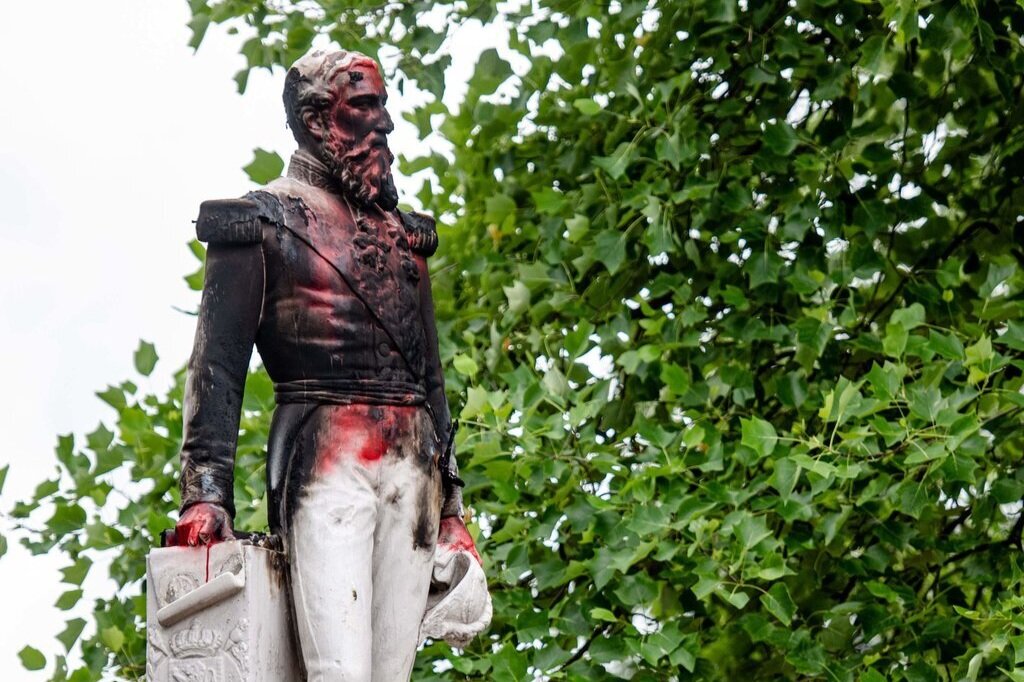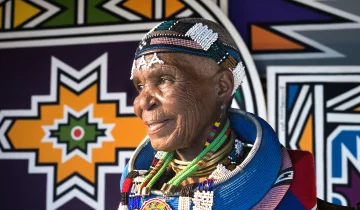In Facing the Ghost Behind the Statue – An opinion piece by Horcelie Sinda Wa Mbongo
‘Statues do not have feelings or a heart’ – The Congolese community in London in response to King Leopold’s statue removal in Antwerp, Belgium.
It is evident that the year 2020 thus far is an agony of the hidden truth. The light at the end of the tunnel seems dimmed, the moon is steady, yet the sun is fighting, a dividend of the twilight saga has occurred. Like the twilight, humans are at once joined and separated as pairs of opposites. If the symbolism is drawn visually, the streets are masked with anger, as living bodies parade throughout the western streets of imperialists. However, if these statues could speak, what would they say? If they could see, has this occupancy of protesting created a discomfort?
King Leopold’s ghost has haunted the subconscious of Congolese people for more than a century. His brutal invasion of the Kingdom of Kongo in the 19th century was authorised by other European countries during the Berlin Conference of 1884 -1885, also known as the Congo Conference. Invading the land meant reinforcing a form of violence and control in order to colonise it. The resulting atrocities committed under King Leopold’s rule are estimated to have claimed more lives than World War I.
Regardless, the dark days of history installed in the memory of the Congolese people are fortified into resistance and resilience —the revolt built against the countless bloodsheds has expressed itself onto the European streets. Cries of the blood of victims of the colonial past are still present. Revealed within the statue is King Leopold’s ghost trying to deafen the awakening of the Congolese people. However, today the removal of King Leopold’s statues in Belgium is perceived as a symbol of psychological reparation, an awakening.

It is a triumphant moment in history to witness the statues that celebrated African colonialism being taken down. The posing question is, could the destruction of statues erase the colonial system imbricated in modern society? Until this day in Congo, men, women and children continue to be the victims of forced labour in a globally-serving mining industry. Those in the diaspora face oppressive challenges within the education system, the healthcare system, in politics and in many other sectors.
While some have argued that Belgium institutions are immune to institutional racism, it causes one to wonder if the statues that glorify colonial heroes in Belgium might reflect the mindset of some citizens. Indeed, while the abolishment of slavery may have happened a while ago, the Psychosis of Whiteness is still very much present today. An example of subtle racism can be found in the story of Romelu Lukaku, a successful Belgian footballer of Congolese descent. The player once said: “When things were going well, I was reading newspaper articles and they were calling me Romelu Lukaku, the Belgian striker. When things weren’t going well, they were calling me Romelu Lukaku, the Belgian striker of Congolese descent.” Lukaku’s observation undresses the marginalised experience of a person of an African heritage precisely. A celebration of a man of African descent is when he contributes to their society for its glorification. He is a man when he is made to be, not when he chooses to be.
Furthering the conversation, a group of London-based activists, intellectuals and writers from the Congolese community have shared their own thought-provoking insights. They unanimously agreed that the removal of these statues would create a shift in the narrative of colonialism, exposing a truth that had and has been, neglected throughout the telling of this history from a western curriculum’s point of view. It was also a reminder of the Congolese’s brutal past.
Moreover, it was not known to many. The statues of King Leopold II stood as a decoration in the city of Antwerp. It stood as a glorification of status, power and greed. Frustratingly, for many of the Congolese in the diaspora, it was instead propaganda. Seeing the Antwerp statue taken down, according to some, meant that the younger Congolese generation no longer had to face the impostor. They will inherit a better future. The petition to remove the statues does not end in Belgium, in other parts of Europe such as Britain and France, protesters are also challenging the authorities to remove statues of those who glorified slavery and racism.
Other articles online suggest the statue will be put back in its original place or adopted by the Middelheim Museum . If this occurs, will the protesters continue to proceed with their petitions? In a nutshell, Memory Matters: Journeys in the British Congolese diaspora, a book written by Congolese researcher Wa Gamoka Pambu, can help readers understand some of the experiences and challenges faced by the Congolese Community in Britain.





 No products in the basket.
No products in the basket.